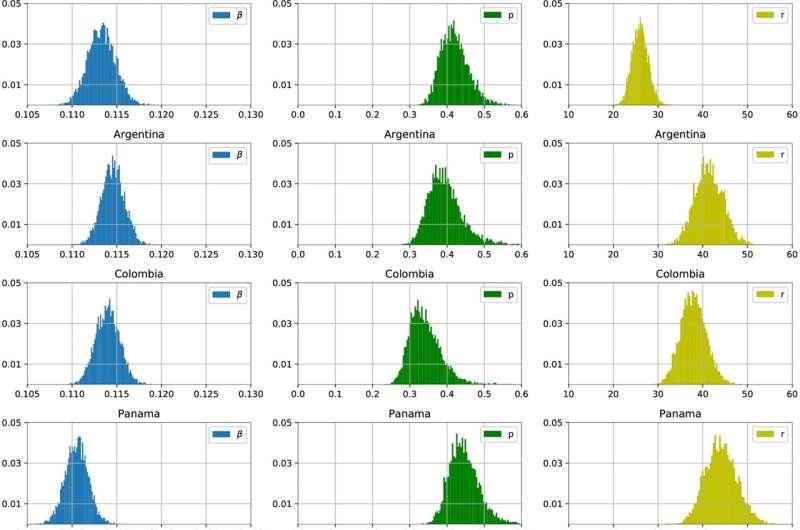Capturing hidden data for asymptomatic COVID-19 cases provides a better pandemic picture

Asymptomatic COVID-19 cases are the bane of computer modelers' existences—they throw off the modeling data to an unknown degree. You can't measure what you can't detect, right? A new approach from Los Alamos National Laboratory's Theoretical Division, however, explores using historic epidemic data from eight different countries to estimate the transmission rate and fraction of under-reported cases.
"Asymptomatic cases are the 'dark matter' of epidemics," said Nick Hengartner, one of the authors on the report published today in the journal PLOS One. "We see only the indirect evidence that more people are sick than reported, and if we don't account for them, we may wrongly conclude that the epidemic is under control. So we changed the model to focus on the observed counts instead of trying to model the 'perfect' world. By looking back through the time series of historical data, we can see from their dynamics what's missing."
The importance of capturing the undocumented cases is significant, especially in a disease such as COVID-19, where asymptomatic individuals have accounted for 20–70% of all infections.
Co-author Imelda Trejo, a postdoctoral fellow at Los Alamos, noted, "This is a new extension of the standard SIR (susceptible-infected-recovered) epidemiological models to study the underreported incidence of infectious disease. The new model reveals that trying to fit an SIR model type directly to raw incidence data will underestimate the true infectious rate. This could actually lead decision-makers to declare the epidemic under control prematurely." Instead, the team presented a Bayesian method (a statistical model using probability to represent all uncertainty within the model) to estimate the transmission rate and fraction of underreported cases.
As tested against the data of eight countries (Argentina, Brazil, Chile, Colombia, Mexico, Panama, Peru and the U.S.), the new approach directly describes the dynamics of the observed, underreported cases. "We use the local dynamics of the observed cases to propose a model that gives us a conditional expectation of new cases, based on the observed history," Trejo said.
More information: Imelda Trejo et al, A modified Susceptible-Infected-Recovered model for observed under-reported incidence data, PLOS ONE (2022). DOI: 10.1371/journal.pone.0263047



















